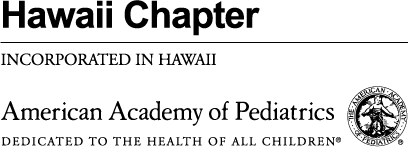Guidelines for Prophylaxis for RSV Infections in High-Risk Infants in Hawaii
NEW RSV PROPHYLAXIS GUIDELINES FOR 2025-2026 ARE CURRENTLY PENDING. THIS PAGE WILL BE UPDATED WHEN NEW GUIDELINES ARE AVAILABLE. OF NOTE, PALIVIZUMAB (SYNAGIS) WILL BE DISCONTINUED AS OF DECEMBER 31, 2025. OTHER ALTERNATIVES ARE NIRSEVIBMAB AND CIESROVIMAB. THE 2025 JUNE RSV-VFC RESOLUTION UPDATE INCLUDES ENFLONSIA (CIESROVIMAB) AS AN OPTION FOR RSV PREVENTION.
The following PDF document is the 2024-2025 Guidelines for Palivizumab Prophylaxis for RSV Infection in High-Risk Infants in Hawaii which is developed by the RSV Consensus Committee, which is comprised of neonatologists, pediatricians, hospitalists, pediatric intensivists, pediatric specialists, and insurance representatives from various hospital and medical groups on Oahu and the neighbor islands every year prior to the RSV season.
This committee also welcomes comments from community pediatricians and other healthcare providers regarding RSV infections in their practices and the impact of these guidelines. Communication with the Committee may be directed to any Committee member listed in the RSV Guidelines document. This feedback is important since these guidelines are evolving with significant changes made regarding duration of treatment, especially towards the end of the season.
Some key points are the following:
These are guidelines for Palivizumab in high-risk infants. The criteria are much narrower than the Nirsevimab criteria, which applies to all newborns < 8 months.
Palivizumab may be an alternative option in those cases where there is no Nirsevimab available or parental preference.
Given the inpatient availability of Nirsevimab, we anticipate a small number of patients receiving Palivizumab during this peak incidence period. However, those eligible for the second season of Palivizumab may receive it in the outpatient setting.
Please continue to follow the Department of Health Medical Advisory: Maternal RSV Vaccination and Infant RSV Monoclonal Antibody for Year-round RSV Prevention in Infants in Hawaii (8/24/2024) below.

